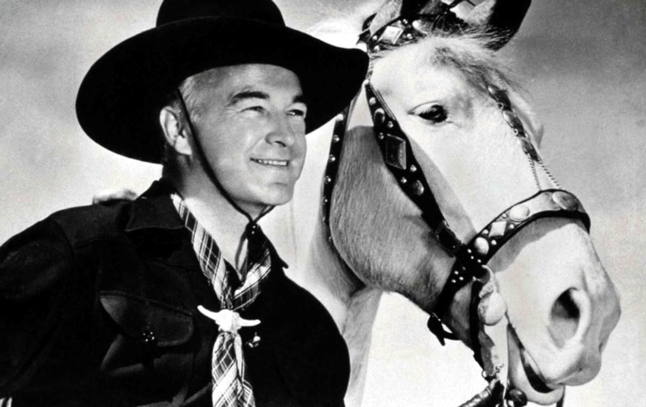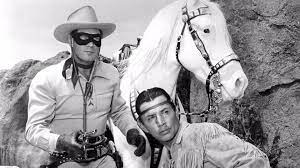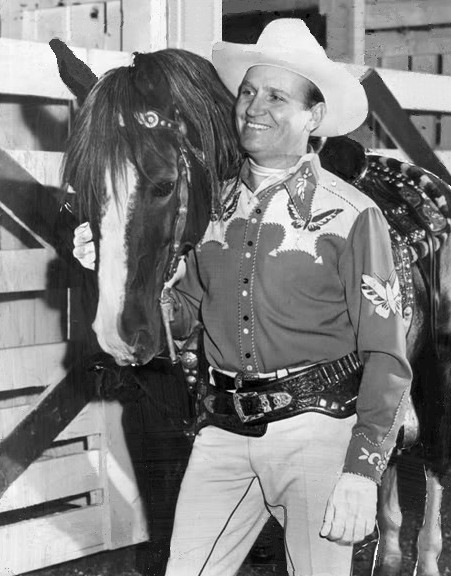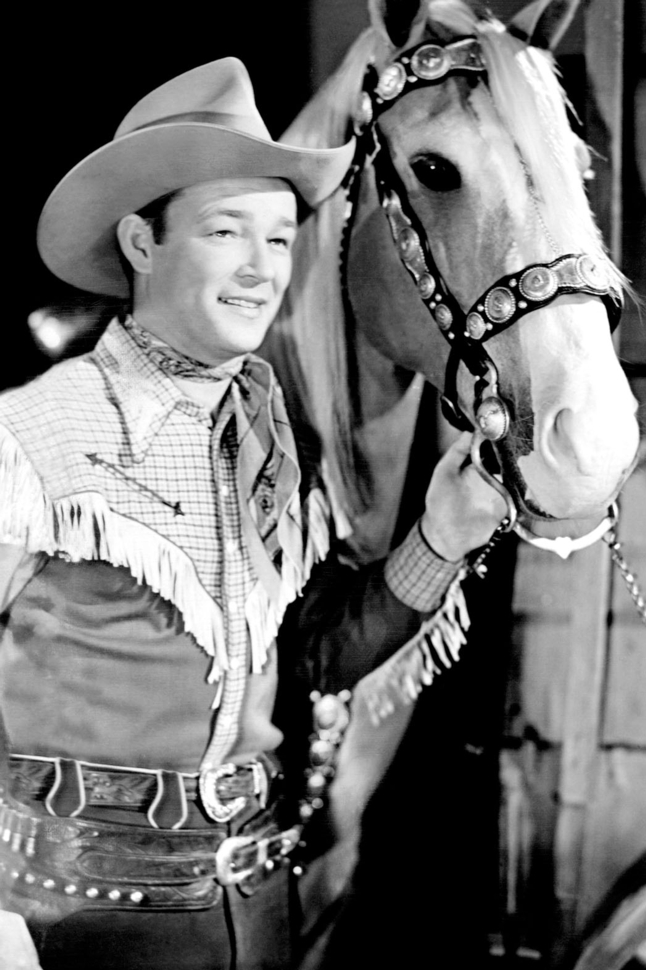The Cowboys
Television cowboys, cowboys, and more cowboys. We had them here, there, and everywhere from our grade school kiddie cowboy, Howdy Doody and his pal, Buffalo Bob, to high school teen heartthrob Steve McQueen in "Wanted: Dead or Alive."

Always there were horses, sometimes cattle, occasionally sheep, often fair maidens, often Indians, usually guns and rifles, once in a while a guitar, always villains, and frequently Gabbys, Andys, Smileys, and Slims for companionship. The good guys didn't drink or cuss, mostly wore white hats, and were kind to women and animals. The bad guys were pretty much the opposite. There wasn't much moral ambiguity and that was alright. We were young and happy to believe.
I've got the biggest stars here. Use the Message Forum to let me know who else should be represented.
Howdy Doody
Sesame Street it was not. But from 1947 to 1960 it kept kids in the house and out of trouble:
After the puppet, it's hard to know where to go nex to check out our cowboys. To my mind, the big four were Hopalong Cassidy, the Lone Ranger, and the two singers, Roy Rogers and Gene Autry. We'll start with the first born—
Hopalong Cassidy
The name was originally spelled Hop-along in a 1904 novel written by Clarence E. Mulford, and he wasn't very nice—he drank, he swore, he picked fights, and his wooden leg accounted for his name. Reborn in a 1935 film starring William Boyd, Hoppy'd developed a good nature, a winning chuckle, and a firm and admirable moral code. This is how Hollywood accounted for his name:
 If you're a fan, you'll enjoy this 70-minute documentary about Hoppy, hosted by Dennis Weaver. Among the many things discussed is the fact Cassidy not only wore a black rather than a white hat, he was dressed all in black as well. Definitely a hero of a different sort.
If you're a fan, you'll enjoy this 70-minute documentary about Hoppy, hosted by Dennis Weaver. Among the many things discussed is the fact Cassidy not only wore a black rather than a white hat, he was dressed all in black as well. Definitely a hero of a different sort.
The Lone Ranger
The Lone Ranger, by legend the last of the Texas Rangers, started life in 1933 as the hero of a radio program. The popularity of the program spurred a series of books, comic books, and movies. The television show came along in 1949 and lasted until 1957.
There are several memorable theme songs from television series ("Dragnet" and "Perry Mason" come to mind), but none more memorable than the "William Tell Overture" used as background music as the Lone Ranger galloped (to the rescue, we presume) on his white steed, Silver:
The Lone Ranger executed many a rescue, but the first was to save the radio station that originated him. WXYZ was struggling to survive in Detroit as a CBS affiliate during the Great Depression. The station manager decided to cut ties with the network  and have the station do its own programming. He contacted New York-based radio writer Fran Striker and, along with the WXYZ creative team, the group dreamed up a hero who would be equal parts Zorro and Robin Hood. His foundation story is related in the 60-minute pilot for the television series.
and have the station do its own programming. He contacted New York-based radio writer Fran Striker and, along with the WXYZ creative team, the group dreamed up a hero who would be equal parts Zorro and Robin Hood. His foundation story is related in the 60-minute pilot for the television series.
Gene Autry
Among the first of the singing cowboys, Gene Autry began his career as a singer working local gigs, singing all  sorts of music including country songs. His film career began in 1934 singing with Smiley Burnette, who would later become a regular in his films, as part of a singing cowboy quartet. Autry quickly advanced to starring roles, the first of which came in the 1935 twelve-part serial called "The Phantom Empire."
sorts of music including country songs. His film career began in 1934 singing with Smiley Burnette, who would later become a regular in his films, as part of a singing cowboy quartet. Autry quickly advanced to starring roles, the first of which came in the 1935 twelve-part serial called "The Phantom Empire."
Between 1934 and 1953, Autry appeared in 93 films and between 1950 and 1956 hosted the Gene Autry Show on television.
Music, however, is where he left his most influential mark. He made 640 recordings, including more than 300 songs written or co-written by himself. He's considerred second only to Jimmie Rodgers as the most influential artist in country music's development. Here he sings "Back in the Saddle Again:"
Fans can learn just about everything they could possibly want to know about Autry at this website. The page called "Watch a Clip" is especially rewarding.
Roy Rogers
 Leonard Franklin Slye got the name Roy Rogers when he won the competition to become Republic Pictures's new singing cowboy after Gene Autry demanded more pay. Like Gene Autry before him, Rogers began his career as a singer. He was part of various singing groups through the 1930's, none of which were very long-lived until the Sons of the Pioneers were formed in 1934.
Leonard Franklin Slye got the name Roy Rogers when he won the competition to become Republic Pictures's new singing cowboy after Gene Autry demanded more pay. Like Gene Autry before him, Rogers began his career as a singer. He was part of various singing groups through the 1930's, none of which were very long-lived until the Sons of the Pioneers were formed in 1934.
The group quickly earned a following and the movies soon came calling. Rogers (still Len Slye) worked steadily as a singing cowboy from 1935 to 1938 when the competition to replace Autry occured. His movies became immensely successful and he became a marketing juggernaut with only Walt Disney eventually owning rights to more licensed products.
The Roy Rogers television show broadcast 100 episodes and lasted from 1951 to 1957.
All things Roy Rogers, including a number of nice video clips, are at the Roy Rogers website. YouTube has lots of videos, too. Here's one with the cowboy singing his signature song:

